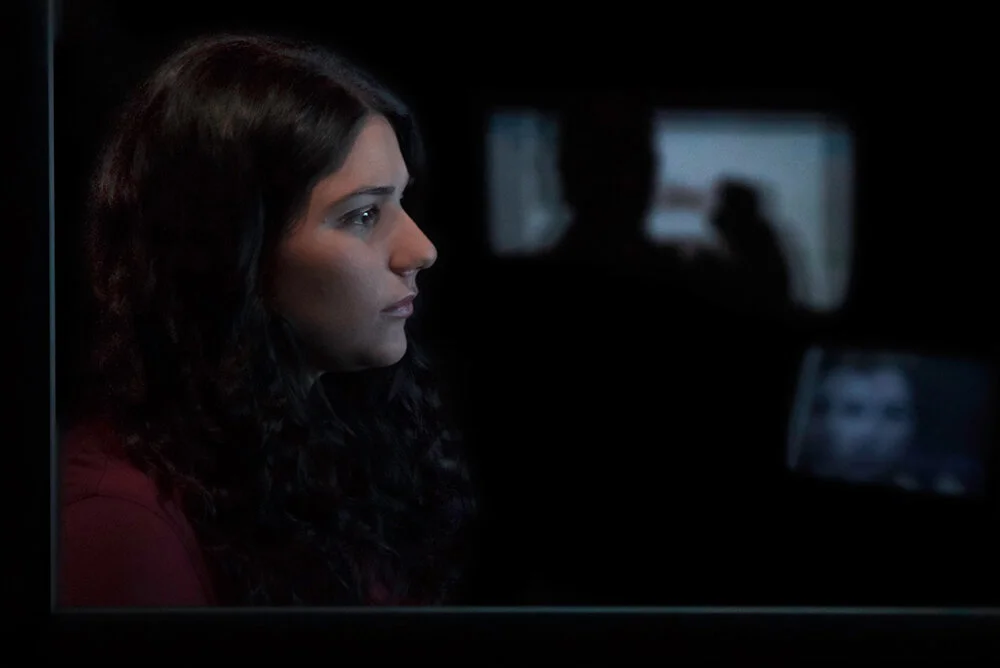Exhibition Review: Karine Laval
The Great Escape © Karine Laval
Written by George Russell
To put it simply, Karine Laval’s The Great Escape examines nature in the city—two things often thought of as standing in opposition to one another. Nature is considered to be apart from urban-ness but can be, simultaneously, an integral part of it. This theme gains depth the longer you look at it, much like the eye-catching yet subtly detailed images which make up the series. Contained to her house in Brooklyn during the first spring of the pandemic, Laval saw her backyard garden in a new light, dwelling on and examining the plants she grew there as a pastime which became an exercise in mindfulness. She began to photograph the plant-scapes of her yard, using mirrors to blend and layer images, creating deep, vibrant textures and evocative, surreal spaces which reflect and distort the closely observed detail of urban nature. Laval initially printed and installed the photographs in the yard itself, tacking them to her wooden back fence in a resourceful side-stepping of pandemic restrictions and fears of the indoors (or an immersive doubling-down on the source material), before being commissioned to turn it into a large-scale lightbox installation by the MTA.
Heterotopia © Karine Laval
Heterotopia © Karine Laval
A confined nature, yards like Laval’s provide pockets of lush greenery in the vast swath of asphalt and cement, providing a personal escape from the city even as they define parts of its fabric. Laval combines flora and built environment in most of her images—flowers and ferns are superimposed over a brick façade, a steel railing, a cement wall. This juxtaposition is mirrored in the very placement of Laval’s “tribute to the natural world” in the 42 St-Bryant Park MTA station—as artificial an environment as you could hope to find, with its concrete vaults and gridded tile. The Great Escape is joyous, its hyper-saturated colors perhaps evoking the dopamine flood of the garden after a gray winter inside. It is otherworldly, kaleidoscopic, especially dazzling against its drab surroundings, which it interacts with beautifully. In some ways, The Great Escape questions the nature of nature. Its dayglo artificiality draws to the fore ideas about what is “natural”—is it plants and other things that grow wild without the intervention of people? Or could the daily commute through warrens of train tunnels be just as natural, seen through the brave new eyes of the post-pandemic. As a wise New Yorker once wrote,
Human beings are, of course, a part of nature, as much so as grizzly bears or bees or whales or sorghum cane. The cities of human beings are as natural, being a product of one form of nature, as are the colonies or prairie dogs or the beds of oysters.
The Great Escape © Karine Laval
Urban nature is more popular than ever—parks have been packed with pent-up people driven by their pent-up demand to be in the open air and feel nature around them after so many months of the drywall cage and, like Laval, are reexamining the natural world which so improbably surrounds them in the modern metropolis. “The lines between nightlife and public space have blurred amid the pandemic,” reports the New York Times, speaking of the influx of people into public spaces like Washington Park since Covid restrictions have been eased. This move has been driven by many factors, but undeniably among them is a reevaluation of the urban outdoors as a place for living. We find ourselves “escaped” once again into plein air like Laval into her garden, into the breezy freedom of out better nature. With any luck that’s where we’ll stay.
Heterotopia © Karine Laval
Heterotopia © Karine Laval
In addition to The Great Escape, Laval has been working on three other public art installations in London and Paris. In London, giant custom-made vinyl decal prints adorn the walls of the lobby of 22 Bishopsgate—completed in 2020 as the second tallest skyscraper in the United Kingdom. The Bishopsgate installation reprises imagery from her Heterotopia series, using hyper-saturated color and a blurring between lush botanical forms and man-made structure. In Paris, Laval is working on a project at the beautiful, enormously scaled department store La Samaritaine—a shimmering, prismatic quadriptych installation which draws from Laval’s Poolscapes series. As part of a nearly nine-hundred-million-dollar renovation and partial adaptive reuse of the art deco landmark, she has been commissioned to create the installation for the new Cheval Blanc Hotel. Laval is also working on another commission at the National Museum of the Chateau de Malmaison outside of Paris—the former home of Napoleon Bonaparte and his wife Josephine de Beauharnais and the last headquarters of Napoleon’s government before his defeat at Waterloo. This project will include existing images from the Heterotopia series as well as new photographs to be taken in the gardens of the chateau—“jardins d’acclimatation” including a diverse array of botanicals from throughout the world. Coming full circle from The Great Escape, this project will be made public in the spring of 2022 with an outdoor exhibition on site in the gardens themselves—the fruition of Laval’s Great Escape on a grand scale but this time set outside by choice, for the natural beauty of its surroundings rather than by pandemic necessity.







